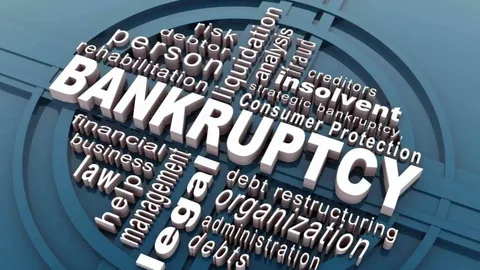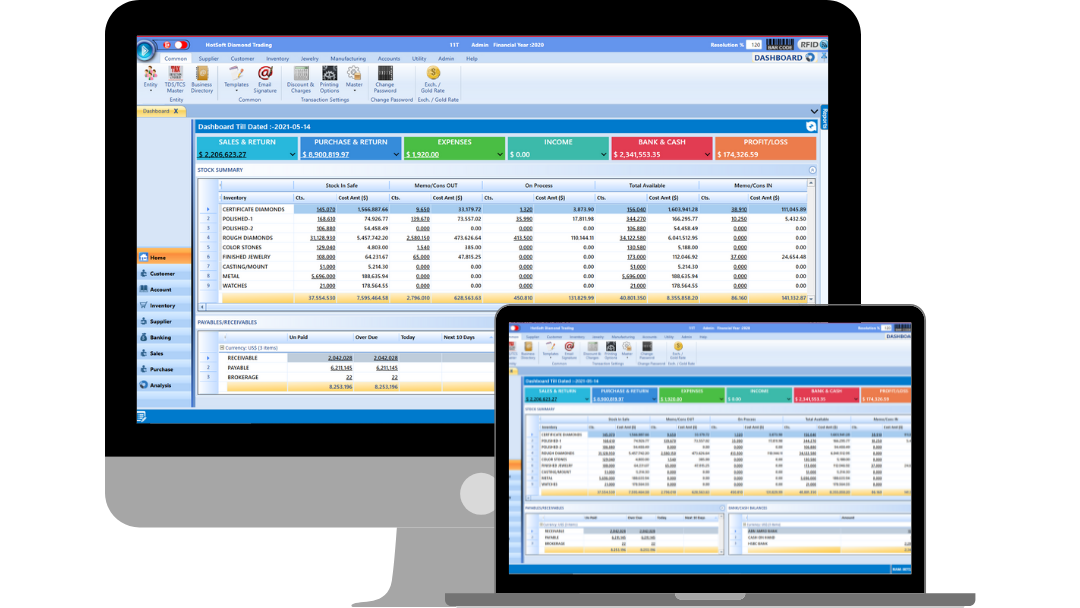Filing for bankruptcy is a significant financial decision that can provide a fresh start to those struggling with overwhelming debt. However, it also impacts future financial opportunities, particularly when it comes to obtaining loans and credit cards. For individuals wondering how bankruptcy affects their financial future, especially regarding bankruptcy Chapter 13, understanding the implications on creditworthiness is crucial. This article will explore the specific ways bankruptcy affects access to loans and credit cards, how it differs between Chapter 7 and Chapter 13 bankruptcies, and what steps individuals can take to rebuild their credit afterward.
Understanding Bankruptcy and Its Types
Before delving into how bankruptcy affects credit access, it’s essential to understand the primary types of bankruptcy for individuals: Chapter 7 and Chapter 13. Each type has unique attributes, and the consequences on future borrowing differ between the two.
Chapter 7 Bankruptcy
Chapter 7 bankruptcy, also known as “liquidation bankruptcy,” is designed to clear unsecured debts such as credit card debt and medical bills by liquidating certain assets to repay creditors. This type of bankruptcy typically remains on a credit report for up to 10 years, impacting the ability to obtain credit for a longer period.
Chapter 13 Bankruptcy
In bankruptcy Chapter 13, often referred to as “reorganization bankruptcy,” individuals commit to a 3- to 5-year repayment plan that allows them to repay their debts partially or fully over time. Chapter 13 provides an opportunity to keep certain assets, such as a home or vehicle, by catching up on overdue payments. Since Chapter 13 focuses on repayment, it generally remains on credit reports for seven years, which may allow individuals to rebuild credit sooner than with Chapter 7.
How Bankruptcy Affects Access to Loans
One of the primary ways how bankruptcy affects an individual’s financial future is through limitations on borrowing. Bankruptcy’s effect on obtaining personal loans, auto loans, mortgages, and other lines of credit varies depending on the lender, the type of bankruptcy filed, and the time that has passed since the bankruptcy.
Personal Loans
Following bankruptcy, obtaining a personal loan can be challenging, as lenders view bankruptcy as a high-risk indicator. Many lenders may refuse to offer personal loans immediately after a bankruptcy, as they see the filing as evidence of potential repayment difficulties.
- Interest Rates: If approved, individuals can expect higher interest rates, as lenders try to mitigate the risk of default.
- Loan Amount Limits: Some lenders may limit the loan amount for individuals with a recent bankruptcy on their record.
- Time Requirement: Many lenders require a waiting period, typically two to three years after discharge, before considering a personal loan application.
Auto Loans
While bankruptcy may make it difficult to obtain loans, car financing is sometimes an exception. Lenders in the auto financing industry are often more flexible, as vehicles can be repossessed if payments are missed.
- Subprime Lenders: Many auto lenders cater to individuals with a history of bankruptcy, though they offer loans at higher interest rates.
- Down Payment Requirements: Auto lenders may require a larger down payment from borrowers with bankruptcy records.
- Chapter 13 Considerations: Individuals in bankruptcy Chapter 13 might need court permission to incur new debt, even for an auto loan.
Mortgages
Mortgages are among the most affected loan types when bankruptcy is involved. Lenders are highly cautious about lending for home purchases after bankruptcy, as it represents a substantial risk for them.
- Waiting Period: Most lenders, including FHA, VA, and USDA loan programs, have a mandatory waiting period after bankruptcy discharge—usually 2-4 years, depending on the program.
- Chapter 13 and Mortgages: Chapter 13 filers may be able to apply for an FHA mortgage after one year of repayment if they have court permission, which can offer a pathway to homeownership sooner than Chapter 7.
- Interest Rates and Loan Terms: Approved applicants will likely face higher interest rates, although refinancing options may become available once credit improves over time.
Student Loans
While bankruptcy affects most loan types, it has limited influence on student loans. Federal student loans are generally non-dischargeable in bankruptcy, so the impact is indirect. However, a bankruptcy filing may affect credit ratings, making private student loan options more limited or expensive.
How Bankruptcy Affects Credit Cards
Credit cards are another area heavily impacted by bankruptcy, as credit card companies weigh bankruptcy as a major indicator of risk. Let’s examine how Chapter 7 and Chapter 13 affect the availability and terms of credit card options.
Credit Card Approval Challenges
After bankruptcy, many traditional credit card companies may reject applications, particularly if the bankruptcy is recent. Most lenders view bankruptcy as a red flag, indicating a higher likelihood of default.
- Secured Credit Cards: Secured credit cards are often an option for individuals with a bankruptcy history. These cards require a cash deposit, which reduces the risk for lenders.
- Subprime Credit Cards: Some companies offer credit cards specifically for high-risk borrowers, but these cards often come with steep fees and high interest rates.
- Waiting Period: It’s generally advisable to wait a few months post-bankruptcy discharge before applying for a credit card to avoid rejections that can further hurt the credit score.
Credit Limit and Interest Rates
Approved credit cards will likely have higher interest rates and lower credit limits. Credit card companies set higher interest rates to compensate for the risk associated with lending to someone with a bankruptcy record.
- Higher APR: Credit cards available post-bankruptcy often come with significantly higher annual percentage rates (APR), sometimes exceeding 25%.
- Low Initial Credit Limit: Credit limits for newly approved cards may be modest, sometimes as low as a few hundred dollars.
- Gradual Limit Increases: With responsible use, some credit card companies may increase the limit and lower the APR after a period of on-time payments.
Rebuilding Credit After Bankruptcy
While bankruptcy has a significant impact on loan and credit card availability, it is possible to rebuild credit over time. Here are some steps to help regain creditworthiness after filing for bankruptcy.
Create a Budget and Financial Plan
A clear budget and financial plan are essential after bankruptcy to avoid future debt issues. Prioritizing essential expenses, such as housing, utilities, and food, over discretionary spending can help keep finances on track.
- Emergency Fund: Building a small emergency fund can help manage unexpected expenses without relying on credit.
- Debt Repayment Strategy: For individuals in Chapter 13, sticking to the court-approved repayment plan can aid in rebuilding credit over time.
Obtain a Secured Credit Card
Secured credit cards are among the most accessible options for individuals with a recent bankruptcy. Responsible use of a secured credit card, including making payments on time and keeping balances low, can help improve credit scores gradually.
Make On-Time Payments
Payment history accounts for a significant portion of a credit score. Making payments on time—whether for utilities, rent, or other bills—helps demonstrate financial responsibility and aids in credit rebuilding.
Consider Credit Builder Loans
Some financial institutions offer “credit builder” loans specifically designed to help individuals rebuild their credit. These loans hold the funds in a savings account until they are fully paid off, helping establish positive payment history.
How Long Does Bankruptcy Affect Credit?
The length of time bankruptcy affects credit varies depending on the type of bankruptcy and individual circumstances.
H3: Chapter 7 Bankruptcy
Chapter 7 remains on a credit report for up to 10 years, making it challenging to secure favorable terms for credit during that period. However, responsible credit behavior can still improve the score over time.
Chapter 13 Bankruptcy
Since bankruptcy Chapter 13 involves a repayment plan, it generally remains on a credit report for seven years. This shorter timeframe can allow individuals to rebuild credit sooner than with Chapter 7.
Conclusion: Preparing for a Fresh Financial Start
Bankruptcy’s impact on obtaining loans and credit cards is significant but not insurmountable. By understanding how bankruptcy affects various types of credit, individuals can make informed decisions about their financial future. Bankruptcy Chapter 13 may offer more flexibility in terms of rebuilding credit due to its shorter credit report lifespan. With careful planning, disciplined spending, and a proactive approach to improving credit, individuals can recover from bankruptcy, gradually gaining access to credit and loan opportunities once again.



